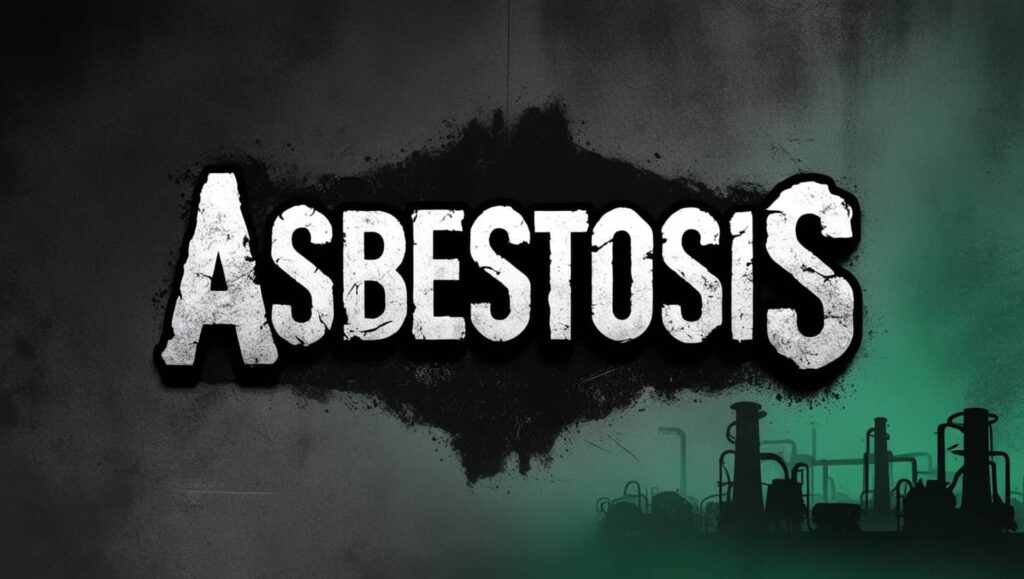Pneumoconiosis is a group of heterogeneous occupational interstitial lung diseases caused by mineral dust inhalation in the lungs, resulting in lung dysfunction.
Patients are usually exposed to these inhalants at work, so it is classified as an occupational disease.
The most common types of pneumoconiosis are asbestosis, silicosis, and coal miner’s lung.
These particles cause lung inflammation and fibrosis, leading to irreversible lung disease.
Types of Pneumoconiosis
Coal worker’s pneumoconiosis → Exposure to coal dust.
Asbestosis → Exposure to asbestos dust.
Silicosis → Exposure to Silica dust (Silicon dioxide).
Berylliosis → Exposure to beryllium dust (aluminum beryllium silicate).
Kaolin pneumoconiosis → Exposure to kaolin dust.
Siderosis → Exposure to iron ore (hematite).
Stannosis → Exposure to tin ore.
Fuller’s earth pneumoconiosis → Exposure to a mixture of silicates of sodium, potassium, aluminum, and magnesium occurs in workers who extract clay material.
Baritosis → Exposure to barites in mining, processing, or handling.
Gypsum pneumoconiosis → Exposure in open-cast or deep mining, and production of plasterboard.
Causes of Pneumoconiosis
It is caused by the accumulation of fine inhaled particles, which causes an inflammatory reaction within the lung.
Inhalation of particles such as silica, asbestos fibers, beryllium, talc, and coal dust are the main causes of the prevalent fibrotic pneumoconiosis.
Exposure to these inhalants typically occurs at work. The risk of pneumoconiosis is correlated with the length of employment.
Since dust-induced interstitial lung disease is a latent condition, the patient’s history typically reveals prolonged exposure to toxic inhalants.
Signs & Symptoms of Pneumoconiosis
Symptoms are generally nonspecific and may overlap with other pulmonary conditions such as chronic bronchitis, COPD, and emphysema.
Patients may complain of the following symptoms: –
- Shortness of breath.
- Decreased exercise tolerance.
- Gradual onset of nonproductive cough.
- Black-pigmented sputum may be produced in patients with coal workers’ pneumoconiosis.
A physical examination may reveal tachypnea and end-inspiratory crackles.
When auscultating lungs, you might hear friction rubbing or wheezing.
Cardiac auscultation may reveal P2 accentuation at the left upper sternal border.
Complications of Pneumoconiosis
Pneumoconiosis can lead to more serious complications.
Asbestosis is also associated with benign pleural effusion and plaques, as well as malignant mesothelioma and bronchogenic carcinoma.
Pleuropulmonary malignancy and pulmonary fibrosis are the most important complications.
The time between the first asbestos exposure and the development of mesothelioma is at least 20 years.
Silicosis can cause more serious complications such as carcinoma or tuberculosis.
Individuals who have coal worker’s pneumoconiosis are more susceptible to developing tuberculosis.
Coal dust inhalation is linked to chronic obstructive pulmonary disease and increases patient mortality rates.
Diagnosis of Pneumoconiosis
It is usually diagnosed based on radiologic evidence and history.
Overall, a pneumoconiosis radiological review shows widespread lung opacities, predominantly in the upper zones of both lungs.
In addition to radiographic evidence of pulmonary fibrosis, the diagnosis is based on long-term exposure to one of these inhalants at high dosages.
The three main criteria are exposure to inhalants, a characteristic chest X-ray, and the absence of a disease that may be mistaken for pneumoconiosis.
On X-ray, pleural plaques are pathognomonic for asbestosis.
Silicosis signs appear after 10 to 20 years of working in that environment.
The X-ray of silicosis will look similar to that of the coal worker’s pneumoconiosis with small interstitial nodules in the upper and mid zones of the lungs.
Small nodules will be seen on CT in both cases, but they will be more concentrated in the upper lung zone.
MRIs can be used to differentiate between progressive massive fibrosis from lung cancer.
On T2 weighted images, lung cancer appears as high signal intensity lesions, whereas progressive massive fibrosis appears as a low signal intensity abnormality.
Treatment of Pneumoconiosis
There is no cure for pneumoconiosis; patients must avoid further inhalant exposure.
Tobacco smokers should be encouraged to quit.
The treatment is community-based or home-based pulmonary rehabilitation to treat symptoms and enhance exercise tolerance.
The majority of pulmonary rehabilitation programs include endurance training, strength training, breathing re-training, and low- or high-intensity exercise training.
These programs may also include nutrition education, psychosocial support for mood symptoms, and health education.
Patients should be monitored for progression and given symptomatic treatment.
Patients with end-stage disease may be transplant candidates.
Summary
Pneumoconiosis is a group of heterogeneous occupational interstitial lung diseases caused by mineral dust inhalation in the lungs, resulting in lung dysfunction.
Patients are usually exposed to these inhalants at work, so it is classified as an occupational disease.
Types of pneumoconiosis include asbestosis, silicosis, berylliosis coal worker’s pneumoconiosis, siderosis, stannosis, baritosis, kaolin, gypsum, and fuller’s earth pneumoconiosis.
It is caused by the accumulation of fine inhaled particles, which causes an inflammatory reaction within the lung.
Inhalation of particles such as silica, asbestos fibers, beryllium, talc, and coal dust are the main causes of the prevalent fibrotic pneumoconiosis.
General symptoms of pneumoconiosis include shortness of breath, decreased exercise tolerance, gradual onset of nonproductive cough, and black-pigmented sputum may be produced in patients with coal workers’ pneumoconiosis.
Pleuropulmonary malignancy and pulmonary fibrosis are the most important complications.
Pneumoconiosis is usually diagnosed based on radiologic evidence and history.
There is no cure for pneumoconiosis; patients must avoid further inhalant exposure.
Tobacco smokers should be encouraged to quit.
References
- Sadhra, S. S., Bray, A., & Boorman, S. (2022). Oxford Handbook of Occupational Health. Oxford University Press.
- Pneumoconiosis – StatPearls – NCBI Bookshelf. Retrieved December 26, 2022, from PubMed
- Qi, X.-M., Luo, Y., Song, M.-Y., Liu, Y., Shu, T., Liu, Y., Pang, J.-L., Wang, J., & Wang, C. (2021, April 13). Pneumoconiosis: Current status and future prospects. Chinese medical journal. Retrieved December 26, 2022, from PubMed







